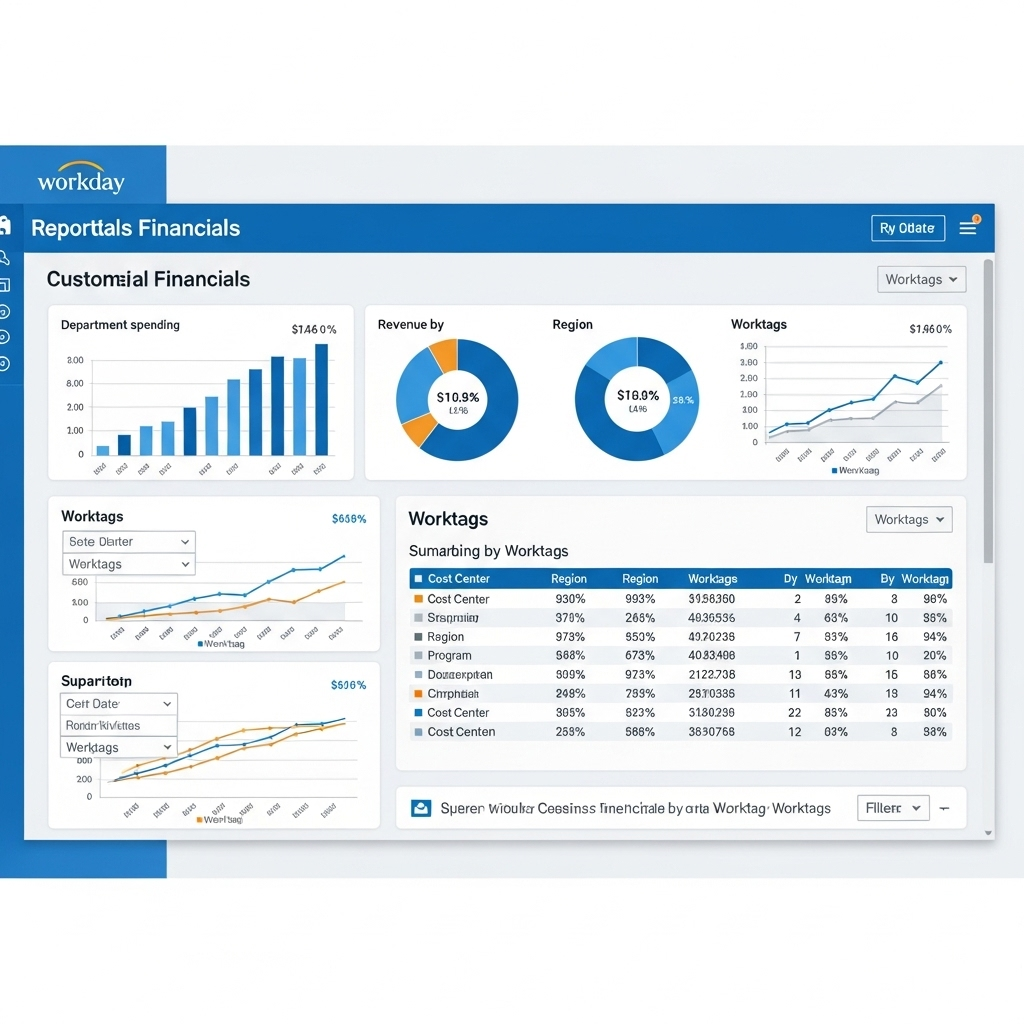
Table of Contents
Beyond Core Accounting: Unlocking Insights with Workday Financials Reporting
Modern finance functions aren’t just about accurate record-keeping anymore; they absolutely demand timely, accessible, and genuinely actionable insights. Enterprise systems are pivotal here, and my research indicates that Workday Financials approaches reporting with a distinct philosophy, one that’s deeply rooted in its unified architecture. While my previous analysis delved into its core accounting engine, the real question for many is: how does Workday actually empower finance teams to see and understand what’s happening within the business in real time?
Workday’s reporting strength largely stems from its object-oriented structure and the well-known Worktags system. Unlike traditional, often rigid, segmented charts of accounts, Worktags enable multi-dimensional analysis without forcing you into predefined reporting structures. Theoretically, this means finance teams can slice and dice data in a multitude of ways, pulling insights directly from live transactional data rather than waiting for periodic updates to a separate data warehouse. Sounds powerful, doesn’t it? But what tools does Workday actually provide to make this a reality, and how can teams best leverage them?
Workday’s Reporting Toolkit: An Overview
Effective financial reporting is the bedrock of strategic decision-making. Yet, it’s surprising how many organizations using Workday Financials only scratch the surface of the platform’s analytical capabilities. My analysis points to several key components within Workday for extracting crucial financial insights:
- Standard Reports: Workday comes packed with a vast library of pre-built reports covering common financial areas (P&L, Balance Sheet, AR Aging, etc.). These are a solid starting point, often configurable with different prompts, and they’re maintained by Workday through updates, which is a plus.
- Custom Reports (Report Writer): Herein lies the real power for many finance teams. Workday’s browser-based Report Writer allows users (with the right permissions, of course) to build custom reports from scratch. This includes selecting data sources (business objects), defining columns, creating calculated fields, and applying sophisticated filters.
- Composite Reports: For more complex scenarios needing data blended from multiple sources or intricate calculations (think custom-formatted financial statements or combining financial data with HR metrics), Composite Reports offer greater flexibility. These often require a deeper grasp of Workday’s data structures but unlock sophisticated analytics directly within the platform.
- Worksheets: This feature offers a familiar spreadsheet-like interface directly within Workday. Users can pull in live Workday data, perform ad-hoc analysis, create visualizations, and drill down into transactions, bridging the gap between structured reporting and offline Excel analysis while staying connected to live data.
- Matrix Reports: These multi-dimensional grids excel at period-over-period comparisons and plan-versus-actual analysis, often used to create dashboard-like views surfacing key trends.
Key Techniques for Advanced Workday Reporting
Simply knowing the tools isn’t enough; maximizing Workday’s reporting value involves strategic application. Optimizing the dimensional framework is paramount. The real value from Worktags emerges when they’re customized to reflect specific business drivers, not just replicating old account structures. Think custom organizations, cost centers, regions, and projects that let you slice data meaningfully.
Calculated fields are another cornerstone, allowing you to embed business logic directly into reports for KPIs, variance analysis, and financial ratios, ensuring consistency. For instance, calculating contribution margins or cost per unit metrics dynamically within reports provides immediate, actionable information. When you need to blend data from different areas, such as correlating financial results with operational metrics like headcount or project progress, Composite Reporting becomes invaluable. This cross-domain approach transforms reporting from a historical record into a tool for forward-looking analysis.
Don’t underestimate the power of personalization through filters and prompts. Instead of countless report variations, dynamic prompts can tailor a single report’s scope, empowering users to explore data independently. And, of course, drillable hierarchies are crucial, allowing users to move from high-level summaries to detailed transactions seamlessly.
Integrating with External BI Platforms: When and Why
While Workday offers a robust native toolkit, it’s common for organizations to integrate it with enterprise Business Intelligence (BI) platforms like Power BI or Tableau. Why? These external platforms often provide more advanced or specialized visualization capabilities and excel at merging Workday data with information from other non-financial systems, creating a holistic enterprise view. Workday facilitates this through APIs and dedicated connectors.
The choice isn’t always either/or. Key factors include data freshness needs (Workday native is real-time), the necessity of cross-system data blending (favors external BI), visualization complexity, and the reporting audience’s familiarity with different tools. Often, a hybrid approach works best: Workday for operational, real-time financial reporting, and external BI for broader, consolidated enterprise analytics.
Governance, Best Practices, and Continuous Evolution
To prevent a “wild west” of custom reports, a governance framework is essential. Successful Workday reporting environments typically establish clear naming conventions, a central report catalog, and design standards. This reduces duplication and creates a cohesive user experience. Security is also critical; Workday’s row-level security allows precise data access control, but it requires thoughtful design to balance protection with necessary visibility.
Ultimately, effective reporting isn’t a one-time project. It demands continuous evolution. Regularly reviewing report usage, gathering user feedback, and adapting to changing business requirements ensures the reporting ecosystem remains a strategic asset, not just a compliance tool.
Final Thoughts for Finance Teams
Workday’s reporting suite, particularly its real-time nature and drill-down capabilities, offers significant advantages. However, mastering tools like Report Writer and Composite Reports involves a learning curve. While highly flexible, the native customization might not match the pixel-perfect control of dedicated BI platforms for every specific dashboarding need.
My research consistently shows that organizations gain the most value when they strategically combine Workday’s potent native capabilities for operational and standard financial reporting with the strengths of external BI tools for more complex, cross-functional enterprise analytics. It’s about using the right tool for the right job to unlock true financial insight.
What’s your experience generating insights from your core financial systems? I’d be keen to discuss the challenges and successes, connect with me on LinkedIn.